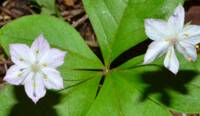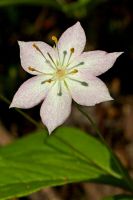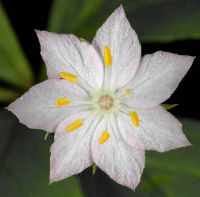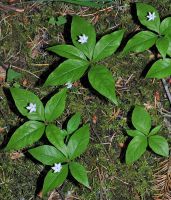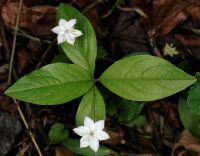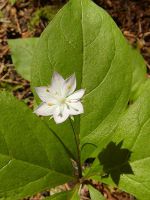Distribution: Occurring on both sides of the Cascades crest in Washington; southern British Columbia to California, east to northern Idaho.
Habitat: Prairies, woodlands, and forest openings from low to middle elevations in the mountains.
Flowers: April-July
Origin: Native
Growth Duration: Perennial
Conservation Status: Not of concern
Pollination: Bees, flies
Perennial herbs from slender rootstocks and tubers, the tubers usually erect, 1-2 cm. long and up to 6 mm. thick; flowering stems 1-2.5 dm. tall.
Leaves 4-8 in a terminal whorl, broadly ovate-elliptic to obovate, 3-10 cm. long and 1.5-4 cm. broad.
Flowers axillary from 1 or more leaf axils, on long, slender, curved pedicels; calyx parted to near the base, the 6 or 7 lobes linear-lanceolate; corolla pinkish to rose, rotate, divided nearly to the base, the lobes the same number as the calyx, broadly ovate; stamens opposite the corolla lobes, exerted, the filaments glabrous, slender, considerably longer than the anthers.
Capsule opening by valves.
Lysimachia europeae has a few stem leaves; Lysimachia latifolia has none.
Publication: Phytoneuron 2014-28: 1. 2014.
Trientalis borealis Raf. ssp. latifolia (Hook.) Hultén [IFBC]
Trientalis europaea L. var. latifolia (Hook.) Torr.
Trientalis latifolia Hook. [FNA8, HC]
PNW Herbaria: Specimen records of Lysimachia latifolia in the Consortium of Pacific Northwest Herbaria database
WA Flora Checklist: Lysimachia latifolia checklist entry
OregonFlora: Lysimachia latifolia information
E-Flora BC: Lysimachia latifolia atlas page
CalPhotos: Lysimachia latifolia photos

















